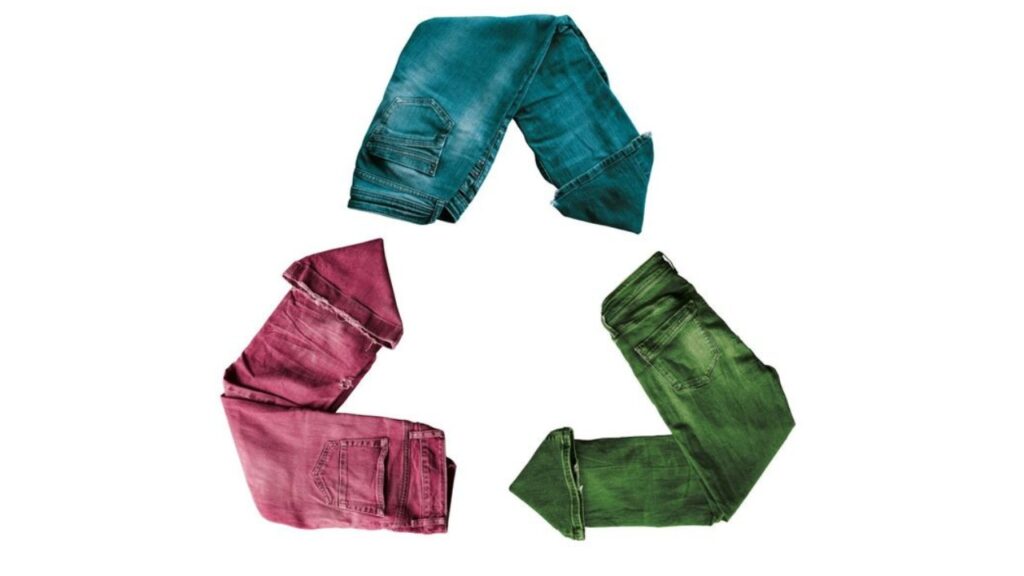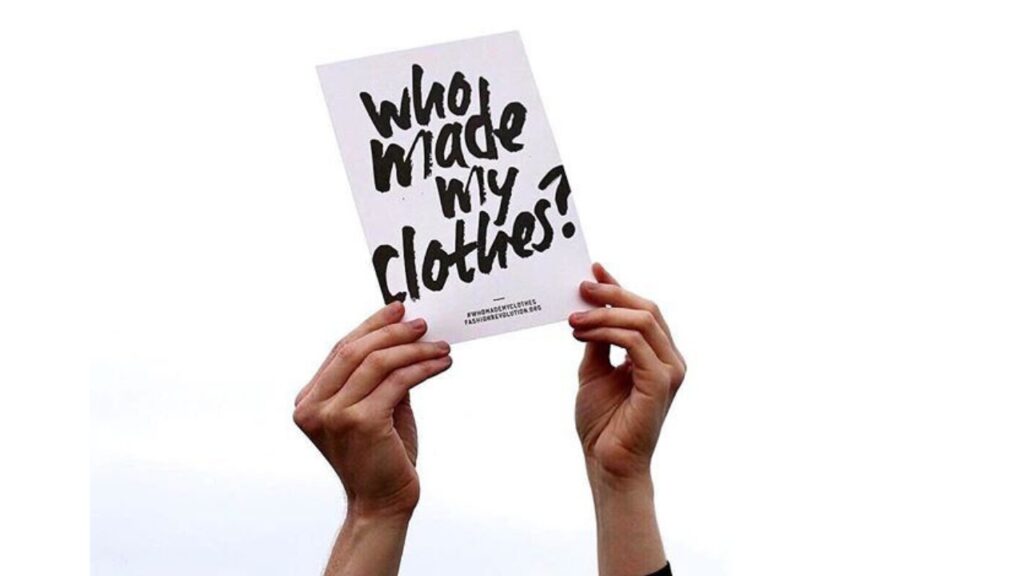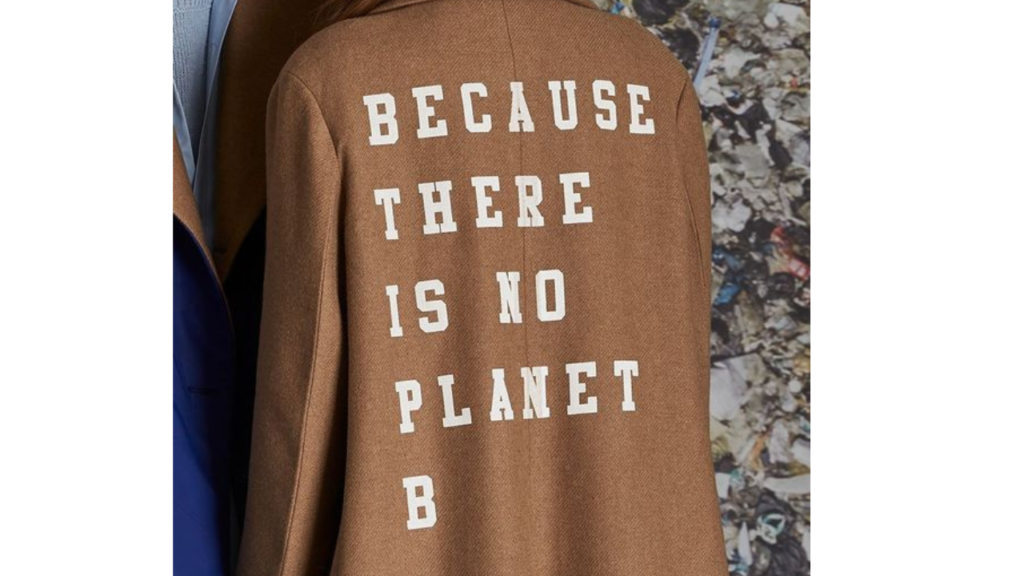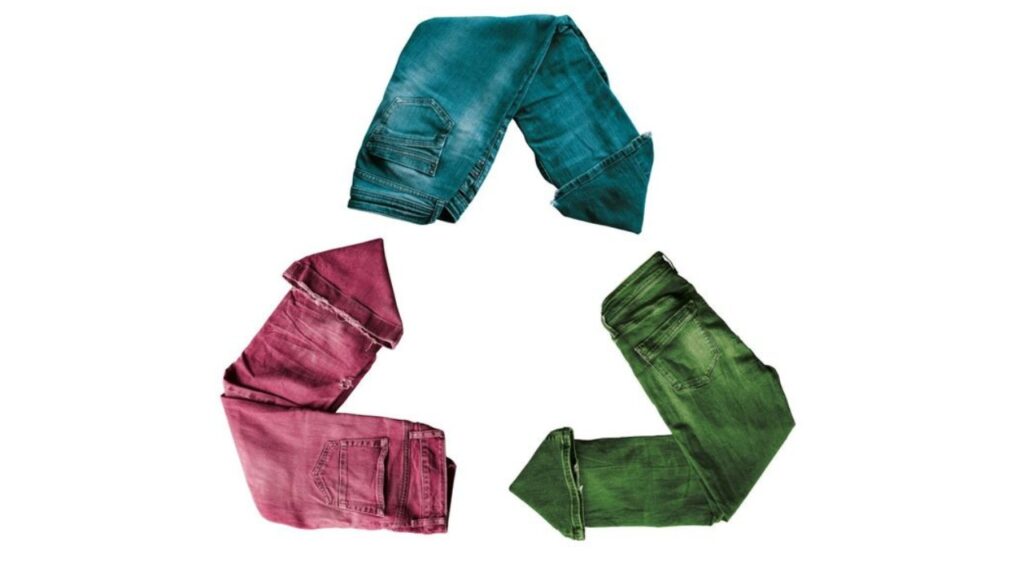Wear the Change: Sustainable Fashion for a Better World
In a world dominated by fast fashion, where trends change in the blink of an eye, the concept of sustainable fashion emerges in the consciousness.
This comprehensive guide aims to unravel the world of sustainable fashion, providing insights, examples, and statistics to empower individuals to make mindful choices in their wardrobe. Let’s dive into the fabric of sustainable fashion and explore its impact on both style and the planet.
Sustainability Meets Style

Sustainable fashion is more than just a passing trend; it’s a commitment to ethical and eco-friendly practices throughout the entire lifecycle of clothing. It encompasses considerations for environmental and social impacts, ethical production, and conscious consumption.
Learn about the Sustainable Clothing market in Singapore.
Table of Contents
Eco-Friendly Materials
“Eco-friendly materials” in the context of sustainable fashion refers to materials that are good for the environment. When making clothes, some materials are better for the planet than others. Eco-friendly materials are those that have less negative impact on the environment.

For example, instead of using fabrics that are harmful to produce or that don’t break down easily, sustainable fashion might use materials like organic cotton, bamboo, or recycled fibers. These materials are grown or produced in ways that use fewer chemicals, water, and energy. They also often involve recycling or reusing existing materials, reducing the need for new resources.
So, in simple terms, eco-friendly materials in sustainable fashion are choices that are kinder to the Earth, promoting a balance between making clothes and taking care of the environment.
- Statistics: According to the World Wildlife Fund (WWF), conventional cotton cultivation is responsible for 16% of global insecticide releases.
Ethical Production Practices:
“Ethical production practices” in the context of sustainable fashion mean that the process of making clothes and accessories is done in a way that is responsible, fair, and considerate of people and the environment.

Here’s a breakdown:
Ethical:
- Treating workers fairly: Ensuring that the people involved in making the clothes are paid fairly, work in safe conditions, and are treated with respect.
- No exploitation: Avoiding practices such as child labor or any form of worker exploitation.
Production Practices:
- How things are made: The methods and techniques used to create clothing, including the materials chosen, manufacturing processes, and the overall impact on the environment.
- Reducing waste: Minimizing the amount of waste generated during production and finding ways to recycle or repurpose materials.
Sustainable Fashion:
Environmentally friendly: Making fashion items with materials and processes that have a lower impact on the planet. This can involve using eco-friendly materials, reducing water and energy consumption, and decreasing overall environmental pollution.

In summary, ethical production practices in sustainable fashion mean creating clothing in a way that is fair to workers, minimizes harm to the environment, and is considerate of the long-term impact on both people and the planet.
Statistics: The International Labour Organization estimates that 160 million children are engaged in child labor, with many in the fashion supply chain.
Circular Fashion Economy:
First, Let’s break down the concept of Circular Fashion Economy in simple terms, especially in the context of Sustainable Fashion.

Circular Fashion Economy:
Imagine if your clothes were designed in a way that they could be used for a long time, and when you no longer wanted them, they could be easily recycled or reused to create new clothing. That’s the basic idea behind the Circular Fashion Economy.
In regular fashion, clothes are often made, used for a while, and then thrown away, creating a lot of waste. Circular Fashion, on the other hand, focuses on creating a cycle where clothes are used, recycled, and used again. It’s like closing the loop instead of having a linear process.
In the context of Sustainable Fashion:
Sustainable Fashion is all about making clothes in a way that is environmentally friendly and socially responsible. Circular Fashion fits into this by ensuring that the entire lifecycle of a garment is considered. This means using eco-friendly materials, designing durable and timeless pieces, and having a plan for what happens to the clothes after they are no longer in use.
So, Circular Fashion in Sustainable Fashion is about creating a system where the fashion industry is not just about making and selling clothes but also about minimizing waste, reusing materials, and creating a more sustainable and responsible approach to clothing production and consumption.
- Statistics: The Ellen MacArthur Foundation reports that the fashion industry produces 92 million tons of textile waste annually.
Practical Tips for Sustainable Fashion
Connecting Second-Hand and Thrifting to Sustainable Fashion:
- Encouraging Reuse: Both second-hand shopping and thrifting emphasize the idea of reusing clothing and accessories, reducing the need for new production.
- Reducing Waste: By choosing second-hand options, individuals contribute to reducing the overall waste generated by the fashion industry.
In simple terms, second-hand and thrifting are about buying and using items that have been previously owned, contributing to a more sustainable and environmentally friendly approach to fashion. It’s a way of enjoying fashion while being mindful of the planet by giving existing products a longer life.
- Statistics: The resale market is expected to reach $64 billion by 2024, according to ThredUp’s Annual Resale Report.
Capsule Wardrobes:
Let’s break it down to understand clearly.
A “capsule wardrobe” is a small, curated collection of essential and versatile clothing items that can be mixed and matched to create various outfits. The idea is to have a compact wardrobe with high-quality, timeless pieces that can be worn in different combinations, reducing the need for a large and constantly changing closet.

Now, let’s connect this to “sustainable fashion.” Sustainable fashion is about making clothing in a way that minimizes its impact on the environment and promotes ethical practices throughout the supply chain. Capsule wardrobes align with sustainable fashion because they emphasize the concept of “less is more.” By investing in a few quality items that can be worn in various ways, you’re less likely to engage in fast fashion – the rapid production of inexpensive, trendy clothing that often leads to overconsumption and environmental harm.
So, a capsule wardrobe in the context of sustainable fashion means choosing a small, thoughtfully curated collection of clothes that are durable, timeless, and can be worn for a long time, contributing to a more sustainable and eco-friendly approach to personal style.
- Statistics: The average American discards about 81 pounds of clothing per year, contributing to landfill waste.
Renting and Borrowing:
Renting: Renting in sustainable fashion means that instead of buying clothes or accessories, you can simply borrow them for a specific period. It’s like borrowing a friend’s dress for a special occasion. You pay a fee to use the item for a while, and then you return it. This helps reduce the demand for new clothes, which can be more environmentally friendly.

Borrowing: Borrowing is similar to renting, but it often involves a more casual and personal exchange among friends or within a community. It’s like sharing clothes with people you know. Borrowing promotes the idea of using and enjoying clothing without the need to own everything. It encourages a sense of community and reduces the overall consumption of fashion goods.
In the context of sustainable fashion, both renting and borrowing contribute to a more eco-friendly approach by promoting the reuse of clothing items, reducing waste, and minimizing the environmental impact associated with the production of new garments.
- Statistics: Renting instead of buying can reduce the carbon footprint of clothing by 30%, as estimated by the Ellen MacArthur Foundation.
4 Challenges in Adopting Sustainable Fashion
Affordability:
Sustainable fashion aims to minimize its impact on the environment, but there has been a concern that such clothing might be more expensive than conventional fashion items.
In an affordable sustainable fashion scenario, the goal is to make eco-friendly clothing accessible to a broader range of consumers. This involves finding ways to produce sustainable clothing at a lower cost or making it financially feasible for more people to choose environmentally friendly options.
Limited Accessibility:
Limited accessibility in the context of sustainable fashion means that sustainable or eco-friendly fashion options are not easily available or accessible to everyone. It implies that there may be barriers preventing a wide range of consumers from choosing sustainable clothing options.
Several factors contribute to limited accessibility in sustainable fashion:
Higher Costs:
Sustainable fashion items often come with a higher price tag. This can make them less accessible to individuals with lower incomes, as they may prioritize affordability over sustainability.
Limited Availability:
Sustainable fashion might not be as widely available as conventional fashion. It may be found in select stores or online platforms, limiting the options for those who do not have easy access to these outlets.
Lack of Awareness:
Some consumers may not be aware of sustainable fashion options or their benefits. Limited accessibility can result from a lack of information or education about sustainable practices within the fashion industry.
Fashion Trends:
Fast fashion trends often prioritize mass production and quick turnover of styles. Sustainable fashion may not always align with these trends, making it less accessible to those who want to stay current with the latest styles.
Size and Fit Concerns:
Sustainable fashion brands may not offer a wide range of sizes or styles, limiting options for consumers with diverse body types and fashion preferences.
Addressing limited accessibility involves making sustainable fashion more affordable, increasing awareness, improving availability, and ensuring inclusivity in terms of sizes and styles. As sustainability becomes a more significant focus in the fashion industry, efforts are being made to overcome these challenges and make eco-friendly options accessible to a broader audience.
Changing Mindsets:
“Changing mindsets” in the context of sustainable fashion refers to shifting people’s perspectives, attitudes, and beliefs about how they view and approach clothing choices. It involves altering the way individuals think about fashion, consumption, and the environmental and social impacts of their clothing decisions.
Here are some key aspects of changing mindsets in sustainable fashion:
Awareness:
The first step is to create awareness about the environmental and social issues associated with the traditional fashion industry. This includes educating consumers about the harmful effects of fast fashion practices such as overconsumption, excessive waste, and exploitation of workers.
Understanding Impact:
Changing mindsets involves helping individuals understand the impact of their clothing choices on the planet and on the people involved in the production process. This includes considering factors like carbon footprint, water usage, and ethical working conditions.
Shift from Fast Fashion:
Encouraging a move away from fast fashion trends, where clothing is produced rapidly and often discarded quickly, toward a more thoughtful and sustainable approach. This might involve investing in timeless, durable pieces rather than constantly buying new items.
Valuing Quality Over Quantity:
Changing mindsets in sustainable fashion emphasizes the importance of valuing quality over quantity. Instead of buying numerous cheap items, individuals are encouraged to invest in well-made, timeless pieces that have a longer lifespan.
Supporting Sustainable Brands:
Encouraging individuals to support and choose fashion brands that prioritize sustainability in their practices. This includes brands that use eco-friendly materials, embrace ethical manufacturing processes, and are transparent about their supply chain.
Embracing Circular Fashion:
Changing mindsets also involves promoting the concept of circular fashion, where clothing items are designed to be recycled, upcycled, or biodegradable, reducing the overall environmental impact.
Personal Responsibility:
Encouraging a sense of personal responsibility for one’s fashion choices. Individuals are urged to consider the long-term consequences of their purchases and to make more mindful decisions that align with sustainable values.
In essence, changing mindsets in sustainable fashion involves a shift towards a more conscious and responsible approach to clothing consumption, where individuals consider the environmental and social implications of their choices and make decisions that align with sustainable principles.
Rewards of Embracing Sustainable Fashion
Environmental Impact:
“Environmental impact” in the context of sustainable fashion refers to the overall effect that the production, consumption, and disposal of clothing have on the environment. Sustainable fashion aims to minimize and mitigate the negative environmental consequences associated with the fashion industry. Several key aspects contribute to the environmental impact of fashion:

Material Selection:
The choice of materials used in clothing production significantly influences its environmental impact. Sustainable fashion promotes the use of eco-friendly materials, such as organic cotton, hemp, Tencel, and recycled fibers. These materials are often produced using fewer chemicals, water, and energy compared to traditional ones.
Production Processes:
The methods employed in manufacturing garments can have a substantial impact on the environment. Sustainable fashion emphasizes eco-friendly production processes, including reduced water usage, energy efficiency, and the use of environmentally friendly dyes and chemicals.
Waste Generation:
The fashion industry generates a significant amount of waste, including fabric scraps, unsold clothing, and discarded items. Sustainable fashion seeks to minimize waste through practices such as upcycling, recycling, and designing durable and long-lasting garments.
Transportation and Distribution:
The transportation of clothing materials and finished products contributes to the carbon footprint of the fashion industry. Sustainable fashion considers factors like local sourcing and ethical supply chain practices to reduce the environmental impact of transportation.
Consumer Behavior:
The way consumers use and dispose of clothing plays a crucial role in the environmental impact of fashion. Sustainable fashion encourages responsible consumption, promoting practices such as repairing, reusing, and recycling garments to extend their lifespan.
Chemical Use:
Traditional textile manufacturing involves the use of various chemicals, which can harm the environment. Sustainable fashion aims to minimize the use of harmful chemicals and adopt safer alternatives, ensuring that the production process is less polluting.
By addressing these factors, sustainable fashion seeks to create a more environmentally friendly and ethical industry that considers the entire lifecycle of clothing, from raw material extraction to disposal. The goal is to reduce the negative impacts on ecosystems, conserve resources, and promote a more sustainable and responsible approach to fashion.
Supporting Ethical Practices:
Supporting ethical practices in the context of sustainable fashion involves promoting and endorsing fair, humane, and socially responsible behaviors throughout the entire fashion supply chain. This encompasses the production, manufacturing, and distribution processes of clothing, as well as the treatment of workers involved. Here are key aspects of supporting ethical practices in sustainable fashion:
Fair Wages and Labor Conditions:
Ethical practices involve ensuring that workers involved in the production of clothing are paid fair wages and provided with safe and healthy working conditions. This includes fair working hours, proper facilities, and adherence to labor laws.
No Exploitation:
Ethical fashion opposes the exploitation of workers, which includes child labor, forced labor, and unsafe working conditions. Brands committed to ethical practices take measures to ensure that their supply chain is free from such unethical practices.
Transparency:
Ethical fashion brands are transparent about their supply chain, providing information about the sourcing of materials, manufacturing processes, and the treatment of workers. This transparency allows consumers to make informed choices and hold brands accountable.
Animal Welfare:
In sustainable fashion, ethical practices extend to the treatment of animals. Brands may avoid using materials derived from animals or ensure that animal-derived materials are sourced responsibly, considering the welfare of animals involved.
Cultural Respect:
Ethical practices also involve respecting and valuing the cultural heritage of the communities involved in the production of fashion items. This includes respecting traditional craftsmanship and ensuring that local communities benefit positively from fashion production.
Environmental Responsibility:
While sustainable fashion primarily focuses on environmental impact, ethical practices also consider the social aspects of sustainability. This includes minimizing pollution, reducing waste, and using eco-friendly materials in a way that benefits both the environment and local communities.
By supporting ethical practices in sustainable fashion, consumers contribute to the overall well-being of workers, communities, and the environment. This approach aligns with a holistic view of sustainability that addresses both social and environmental concerns within the fashion industry.
Personal Satisfaction:
“Supporting personal satisfaction” in the context of sustainable fashion refers to the idea that choosing and promoting eco-friendly clothing options can contribute to an individual’s sense of fulfillment, happiness, and well-being. Here’s how this concept works:

Ethical Values Alignment:
Sustainable fashion often involves making choices that align with ethical values. When individuals choose clothing produced in environmentally friendly and socially responsible ways, it can provide a sense of personal satisfaction by knowing that their choices are in line with their values. This alignment contributes to a positive emotional connection with one’s clothing.
Conscious Consumerism:
Supporting sustainable fashion allows individuals to practice conscious consumerism. This means making informed choices that consider the environmental and social impact of the products they buy. People who prioritize sustainable fashion may feel a sense of empowerment and satisfaction from making mindful decisions that contribute to a more sustainable and ethical industry.
Reduced Environmental Impact:
Sustainable fashion often involves using eco-friendly materials and manufacturing processes, which can lead to a reduced environmental impact. Individuals who prioritize sustainability may find personal satisfaction in knowing that their clothing choices contribute to minimizing harm to the planet.
Unique Personal Style:
Sustainable fashion is often associated with unique and thoughtfully designed pieces. Choosing sustainable options can provide individuals with a sense of uniqueness and personal style expression. This can lead to greater satisfaction compared to following mass-produced, trend-driven fashion that may lack individuality.
Longevity and Quality:
Sustainable fashion often emphasizes quality over quantity. Investing in well-made, durable clothing that lasts longer can bring personal satisfaction as individuals build a more intentional and long-lasting wardrobe.
In summary, supporting personal satisfaction in the context of sustainable fashion involves finding joy and fulfillment in making ethical and eco-friendly clothing choices that align with one’s values, contribute to conscious consumerism, and promote a sense of uniqueness and individual style.
Related Blog On :- Personal Sustainability, You will like it.
Frequently Asked Questions.
Why is sustainable fashion important?
Sustainable fashion is crucial for reducing environmental harm, promoting ethical labor practices, and addressing the negative social impacts associated with the conventional fashion industry.
What are eco-friendly materials in sustainable fashion?
Eco-friendly materials in sustainable fashion include organic cotton, hemp, bamboo, recycled fibers, and other materials produced with minimal environmental impact.
How can I support sustainable fashion on a budget?
Support sustainable fashion on a budget by buying second-hand or vintage clothing, choosing versatile and timeless pieces, and prioritizing quality over quantity.
What is the difference between sustainable and ethical fashion?
Sustainable fashion focuses on minimizing environmental impact, while ethical fashion emphasizes fair labor practices and workers’ rights. Ideally, a brand should incorporate both aspects.
Can I still follow fashion trends and be sustainable?
Yes, you can follow fashion trends sustainably by choosing timeless styles, embracing second-hand shopping, and supporting brands that prioritize sustainable practices.
How do I know if a fashion brand is truly sustainable?
Look for transparency in a brand’s practices, certifications (such as Fair Trade or GOTS), and information about their supply chain. Check if they prioritize eco-friendly materials and ethical labor practices.
What is the circular fashion economy?
Circular fashion involves designing, producing, and consuming clothing with the intention of extending the product’s lifespan through recycling, upcycling, and minimizing waste.
Are sustainable fashion items more expensive?
Sustainable fashion items can be more expensive due to the use of eco-friendly materials and ethical labor practices. However, they often provide better quality and durability, offering value in the long run.
How can I make my wardrobe more sustainable?
Make your wardrobe more sustainable by buying fewer items, choosing timeless pieces, supporting second-hand or ethical brands, and recycling or donating clothing instead of discarding it.
Conclusion:
Adopting a sustainable fashion lifestyle is a journey toward a more conscious and compassionate relationship with clothing. While challenges exist, the rewards are profound—both for the individual and the planet. By making thoughtful choices in our wardrobes, we not only express our personal style but also contribute to a more sustainable and equitable world. Contact us at :- wecareearth@gmail.com.
Visit the central hub We Care Earth for eco conscious articles on sustainable living, Climate Change, Sustainable Gardening & Green Brands.
References for this article.
- World Wildlife Fund (WWF): https://www.worldwildlife.org/
- International Labour Organization: https://www.ilo.org/
- Ellen MacArthur Foundation: https://www.ellenmacarthurfoundation.org/
- ThredUp’s Annual Resale Report: https://www.thredup.com/resale

4 Comments